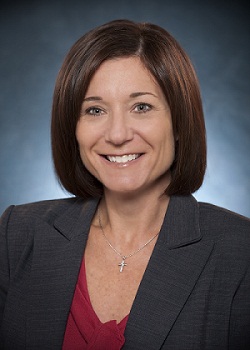 Report from the front lines of Sustainable Energy for All
Report from the front lines of Sustainable Energy for All
Kim Saylor, Vice President for Walmart Energy, recently traveled to Uganda and Kenya to see solar power in action improving the lives of those who have lived for too long without access to modern energy services. In the piece below, she describes her experience seeing families – and in particular children – benefiting from the educational, health and safety improvements that these lights offer to families in developing countries, and how businesses and non-profits are working together to provide these solutions to the families who need them the most.
Ms. Saylor serves alongside the United Nations Foundation’s own Richenda Van Leeuwen, who leads the work of the Energy Access Practitioner Network, as one of the U.S. Department of Energy’s Women Clean Energy Ambassadors, within the Clean Energy Education and Empowerment Women’s Initiative (C3E). The C3E Initiative is part of the United States’ commitment to the U.N. Secretary-General’s Sustainable Energy for All initiative.
The bigger benefits of solar power
Recently, while I was out of the country, the Walmart U.S. energy team announced our 100th solar installation on Walmart stores and Sam’s Club locations in California. While I hated to miss a great milestone for our team, I was happy to be working on another, much smaller solar project with the help of Empower a Child, a nonprofit organization that works to empower children in Uganda and Kenya through education and sponsorship.
According to the U.N., nearly 20 percent of people around the world do not have access to modern electric services. Forty percent, or three billion people, rely on wood, coal, charcoal, kerosene or animal waste for lighting and cooking. In the very small rural community near the village of Zirobwe, Uganda, the number without access is closer to 100 percent.
Most of us have experienced the inconvenience of being without electricity during a power outage and can relate to the challenges. But what if we never had it? Ever? What if we had to light a small kerosene lamp made from a jelly can in order to study, read, or cook? Not just during a power outage, but every night. What if we had to pay to send our cellphones on a truck to a larger city to be charged, with the hope that we would get them back in a few days? Access to basic electric services is critical to the future of millions of children around the world. It lights up homes, schools and hospitals. It provides women, children and communities connection points to the rest of the world. And it can be an important step on the road to ending generational poverty for all.
While in the village with Empower a Child, I was blessed with the opportunity to help brighten the nights of eight families who received solar lanterns donated by members of the First Baptist Church in Pea Ridge, Arkansas. It’s hard to describe in words what was expressed by the families who received them: deep appreciation, happiness and understanding of the difference the lamps would make in their lives. And that was just for the lighting benefits. The excitement reached another level after we explained that the lanterns could also charge their cellphones. Every day. For free. In their own homes.
Each family shared with us how the lights would make their lives easier. Most brought out their existing kerosene lamps to show us their traditional light source. I hadn’t realized that a kerosene lamp meant a jelly can cut in half with a wick. Happy mothers told me that the solar lanterns would provide better lighting for their children to study at night and explained that the new source would be much safer because it eliminates the fire hazard created by kerosene lamps. They also shared what a difference it will mean in their lives to save the money they previously spent on kerosene, which is estimated to be between 10 to 25 percent of a rural family’s monthly household income in Africa.
Solar electricity has proved to be a clean, economical and reliable power source that we hope to continue to expand at our Walmart stores and Sam’s Club locations in the U.S. and around the world. This same technology, when packaged in a solar charging lantern costing between $20 and $50, provides equally significant benefits to rural villagers in Uganda. Families can be more productive because the working day is lengthened. Students are able to study longer to achieve higher grades, increasing the chance that they will be able to continue to further their educations. Lighting from a clean energy source also reduces the risk of fire and greatly improves indoor air quality. Access to clean electricity through solar lanterns can transform lives, especially those of women and children, in rural Uganda and can be an important step to a brighter future for all.
For more information about the UN Secretary-General’s Sustainable Energy for All Initiative and the Energy Access Practitioner Network, please visit www.sustainableenergyforall.org.

